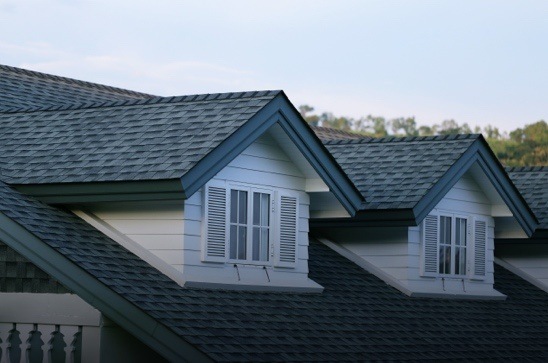When it’s time to replace or install a new roof, one of the most common questions we hear from homeowners is: Do metal roofs leak more than shingles? It’s an understandable concern. Your roof is the first line of defense against rain, wind, and moisture. Choosing a material that will protect your home—and not give you problems down the road—is a big decision.
Harveys Five Star Roofing has installed and repaired thousands of roofs over the years, including both metal and asphalt shingle systems. What we’ve seen, time and again, is that the risk of leaks has less to do with the type of roofing material and more to do with how the roof is installed, how it’s maintained, and how it’s treated over time.
Let’s take a closer look at how metal roofs and shingles stack up when it comes to leak potential.
What Actually Causes a Roof to Leak?
Many people assume that leaks are a direct result of the material used. However, the truth is, the roofing material alone isn’t the root of most leaks. What we often find is that poor workmanship, skipped maintenance, or storm damage are the real causes. Even the best materials won’t hold up if they’re improperly installed or ignored for years.
Leaks often begin at weak points in the roof: around vents, skylights, chimneys, or seams. If flashing isn’t applied correctly, or if fasteners are loose, water can sneak in and start creating damage. Over time, even a small issue can lead to major problems like mold, rot, or structural decay.
Both metal and shingle roofs have unique characteristics that influence how they respond to the environment. Neither one is automatically more prone to leaking. However, understanding their strengths and weaknesses helps you avoid common pitfalls.
How Metal Roofs Handle Water and Weather
Metal roofs have become increasingly popular thanks to their durability, sleek appearance, and long-term performance. A properly installed metal roof can last anywhere from 40 to 70 years. It resists wind, fire, insects, and impacts better than many other materials. Nevertheless, like any roof, it needs to be installed with care.
One of the biggest benefits of metal roofing is that the panels often come in long sections, which reduces the number of seams where water can get in. The panels are designed to interlock and direct water away from the home, and most systems include a coating that helps prevent rust or corrosion.
Despite these benefits, issues can still arise. Leaks may develop due to improperly installed fasteners—whether overdriven, underdriven, or placed incorrectly. Temperature fluctuations can also cause the metal to expand and contract. This potentially leads to seam separation or panel movement if the system is not designed to accommodate thermal shifts.
Another common problem involves flashing around roof penetrations. Flashing must be carefully installed to align with the contours of the metal panels. If this step is rushed or done incorrectly, water can slip beneath and pool in vulnerable areas. These issues stem not from the material itself but from errors in the installation process.
Shingle Roofs and Their Vulnerabilities
Asphalt shingles remain the most common roofing choice across the country. They’re cost-effective, easy to install, and offer a classic look that suits a wide range of homes. A well-installed asphalt shingle roof can last 20 to 30 years–depending on the climate and upkeep.
However, shingles do face a few challenges when it comes to leaks. Each individual shingle overlaps the next. This creates thousands of small seams across the roof’s surface. If even a few shingles are misaligned, cracked, or missing, it can give water an opening.
Over time, shingles can begin to curl, blister, or lose their protective granules. That wear exposes the underlying material and accelerates water absorption. Strong winds can also lift the edges of shingles and allow rain to push underneath. Poor attic ventilation or heat buildup can cause shingles to age faster, increasing the risk of failure.
It’s also important to note that shingle roofs rely heavily on underlayment and flashing to protect against leaks. If either of those components is compromised or missing, moisture can reach the wood decking below and start doing damage before you notice any visible signs inside your home.
The Installation Factor: Why Craftsmanship Matters More Than Material
Even the highest-quality roofing material won’t provide adequate protection if it is installed poorly. The majority of leaks—whether on metal or shingle roofs—are often the result of installation errors.
In particular, metal roofing is less forgiving of errors. It requires specific techniques, specialized tools, and a solid understanding of how the panels interact with flashing, fasteners, and underlayment. Many general contractors don’t have the hands-on experience required to do metal roofing the right way, and that’s when leaks are most likely to happen.
Shingles are more straightforward to install. This is one reason they’re so widely used. But shortcuts during installation—like poor nail placement or missing flashing—can still cause major problems. In areas with high heat or frequent storms, like Florida, it’s even more important to use materials suited for local conditions and to follow best practices every step of the way.
Harveys Five Star Roofing prides itself on craftsmanship. We don’t cut corners, and we never rush the job. Our team is fully trained in both metal and shingle roofing systems, and we approach each project with the goal of making your roof last as long as possible—without leaks, without stress.
Maintenance and Inspection: Keeping Any Roof Leak-Free
Regardless of the roofing material, regular maintenance is key to preventing leaks. Over time, exposure to sun, wind, and rain takes a toll. Fasteners can loosen, sealants can break down, and debris can accumulate in valleys or gutters–directing water where it shouldn’t go.
With metal roofs, inspections should focus on fastener integrity, seam alignment, and flashing details. Small problems like worn gaskets or a missing screw can be fixed before they turn into expensive issues.
For shingle roofs, maintenance usually involves checking for damaged or missing shingles, clearing out leaves and debris, and watching for signs of wear around roof edges and penetrations. Because shingles are thinner and more porous than metal panels, they may need more frequent attention.
We always recommend an annual inspection, especially after a heavy storm season. It’s much easier—and cheaper—to address a potential leak before it shows up on your ceiling.
Debunking Common Myths About Metal Roofs and Leaks
There’s a lot of misinformation out there about metal roofs, especially when it comes to leaks. One common myth is that metal roofs are more likely to leak because of thermal movement or because you can’t walk on them without causing damage.
The truth is that modern metal systems are designed to accommodate temperature changes and to support foot traffic during inspections or maintenance—when done properly.
Another myth is that metal roofs are noisier during storms. In reality, when installed with solid decking and insulation, a metal roof is no louder than a shingle roof. If anything, the density of metal often makes it feel sturdier during rain or hail.
People also worry that metal will rust and eventually lead to leaks. However, high-quality metal roofing comes with rust-resistant coatings, and as long as the surface isn’t scratched or neglected, the risk of corrosion is minimal.
So, Do Metal Roofs Leak More Than Shingles?
Neither material is inherently more prone to leaks. The key factor isn’t the roof type—it’s the quality of the installation, the system’s design, and ongoing maintenance.
Metal roofs may last longer, resist damage better, and offer improved energy efficiency. However, they need to be installed by a contractor who understands the details. Shingle roofs are easier to install and more affordable upfront. Meanwhile, they may require more frequent inspections and replacements over time.
If you’re worried about leaks, your best move is to choose a contractor who knows how to do the job right—and stands behind their work.
Trust Our Experience at Harveys Five Star Roofing
We know that choosing the right roof for your home can feel overwhelming. However, you don’t have to figure it out alone. Harveys Five Star Roofing is here to guide you through the process and help you make the best choice for your home and budget.
We install both metal and asphalt shingle roofing systems with expert care. Our team handles everything from full replacements to storm damage repairs and long-term maintenance plans. We treat your roof like it’s protecting our own family—and that’s how we build trust with every homeowner we work with.
If you’re weighing the pros and cons, or if you’ve had a leak and want a second opinion, we’d be happy to take a look. Reach out to us at Harveys Five Star Roofing and let’s start the conversation. Explore our residential roofing and commercial roofing services.









